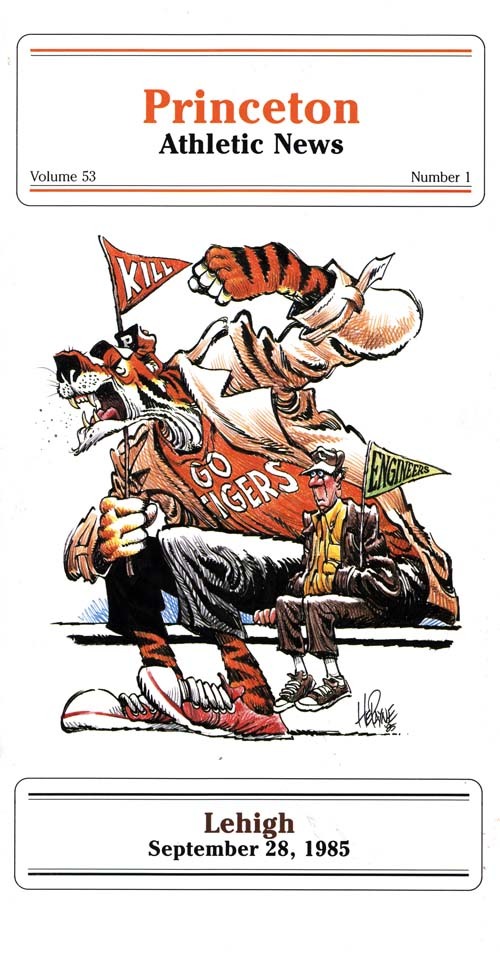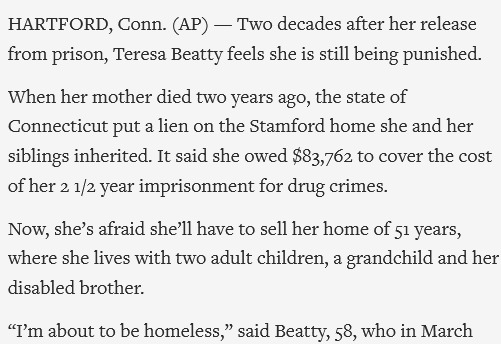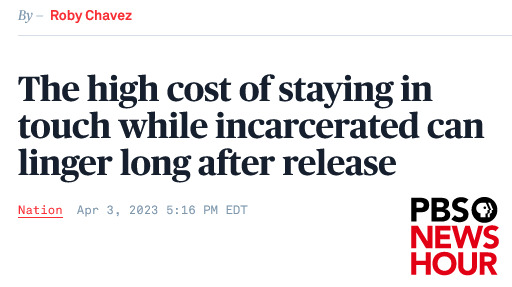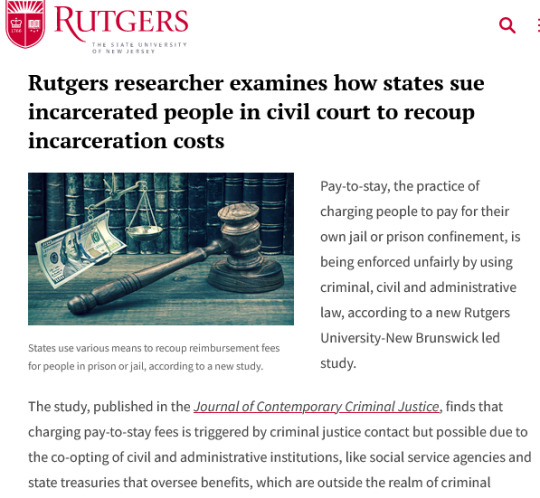#Lehigh University
Text


Lehigh Track
#Lehigh University#Lehigh Mountain Hawks#track girls#track & field#college track & field#athlete#female athletes#college athlete#college girl
81 notes
·
View notes
Text

Researchers make sand that flows uphill
Engineering researchers at Lehigh University have discovered that sand can actually flow uphill.
The team's findings were published today in the journal Nature Communications. A corresponding video shows what happens when torque and an attractive force is applied to each grain—the grains flow uphill, up walls, and up and down stairs.
"After using equations that describe the flow of granular materials," says James Gilchrist, the Ruth H. and Sam Madrid Professor of Chemical and Biomolecular Engineering in Lehigh's P.C. Rossin College of Engineering and Applied Science and one of the authors of the paper, "we were able to conclusively show that these particles were indeed moving like a granular material, except they were flowing uphill."
The researchers say the highly unusual discovery could unlock many more lines of inquiry that could lead to a vast range of applications, from health care to material transport and agriculture.
Read more.
32 notes
·
View notes
Photo

(via GIPHY)
#giphy#coffee#monday#need coffee#monday mood#national coffee day#international coffee day#coffee please#good morning monday#good morning funny#mondays#lehigh#lehigh university#lehighu#lehigh u
18 notes
·
View notes
Text

@Lenaperlutter on Instagram
6 notes
·
View notes
Photo









(via Lehigh University Singleton, Hitch, and Maida Residential Houses / Sasaki | ArchDaily)
1 note
·
View note
Text
Lehigh University student attacked; Pennsylvania's Brandon John, Cameron Graf, Nabil Jameel, Michael Rosta arrested
Cameron Graf, 22, Nabil Jameel, 22, and Michael Rosta, 21, are all residents of Hatfield, Montgomery County, Pennsylvania, United States. Brandon John, 22, lives in East Norriton Township, Montgomery County.
A black student at Lehigh University in Bethlehem, Pennsylvania, United States
youtube
View On WordPress
0 notes
Photo

Bethlehem, PA - Lehigh University’s Chloe Hess (2) delivers a pitch to a Seton Hall University batter during their weekend series which saw Seton Hall win two of the three games. Lehigh remains undefeated in Patriot League competition, 6-0, and is currently 28-9 overall.
0 notes
Text
Villanova takes care of Lehigh in season opener
Villanova takes care of Lehigh in season opener

View On WordPress
#CAA Football#Connor Watkins#DeeWil Barlee#go nova#Jaaron Hayek#Jalen Jackson#Lehigh Mountain Hawks#Lehigh University#NCAA Football#Nova Nation#Rick Pettine#season opener#Sports#tap the rock#TD Ayo-Durojaiye#Villanova Football
0 notes
Text
Does Lehigh provide you with a laptop if you’re in IBE? Any laptop recommendations?
No. There are computers available to use at the libraries (Linderman and FML). The person asking asked about laptops for coding. So far from my experience, a Windows or Mac doesn’t really matter as for operating system. However, I don’t recommend those super thin laptops like Macbook Airs or Surface Pros. They get really hot and the battery will drain faster than usual especially if you have to run Zoom + Coding software. Get anything with above 4GB’s of RAM. The new M1, M2 macs are phenomenal (personally because I own an iPhone and it’s convenient). No, but seriously M1 macs are not to be looked down on. For Windows, at least, bare minimum, a CPU Intel Core i3 and then i5 is better.
Please don’t try coding from an iPad or Chromebooks it’s terrible and many softwares won’t work on it.
#lehigh#lehigh university#college#admittedstudents#classof2026#csb#ibe#faq#q&a#freshmentips#recommendation#collegelaptop
0 notes
Text
The Lehigh University Police Department assisted the Bethlehem Police in an incident where a Lehigh student was attempting to steal a street sign at the intersection of Morton and Buchanan Streets. The conduct records said the BPD believes the student was participating in a fraternity scavenger hunt. The student refused to say what fraternity he is in, but he is listed as a new member of Phi Sigma Kappa.
#Lehigh University#LU#Bethlehem#Pennsylvania#Phi Sigma Kappa#lehighphisig#PSK#psklehigh#Nu chapter#ΦΣΚ
0 notes
Photo


Lehigh Track
#Lehigh University#Lehigh Mountain Hawks#track & field#track girls#track and field girls#athlete#female athletes#college athlete#college girl#bikini#athletes in bikinis#Patriot League athletes#Girls of the Patriot League
39 notes
·
View notes
Text
Ethylene is sometimes called the most important chemical in the petrochemical industry because it serves as the feedstock for a huge range of everyday products. It's used in the production of antifreeze, vinyl, synthetic rubber, foam insulation, and plastics of all kinds.
Currently, ethylene is produced through an energy- and resource-intensive process called steam cracking, where extremes of temperature and pressure produce ethylene from crude oil in the presence of steam -- and in the process, emit tons of carbon dioxide into the atmosphere. Another way in which ethylene can be produced, however, is through a process called oxidative coupling of methane (OCM). It has the potential to be a greener alternative to steam cracking, but until recently, the amount of ethylene it yields did not make the process economically viable.
Read more.
#Materials Science#Science#Ethylene#Chemistry#Materials processing#Core shell structures#Catalysts#Oxides#Rare earth elements#Lehigh University
10 notes
·
View notes
Photo

Tiger Tuesday: The Princeton tiger cheers for the team against Lehigh University, September 28, 1985. At that time, the Lehigh teams were known as the Engineers, and had no official mascot, which is why the fan next to the tiger has an “Engineers” banner.
Athletic Programs Collection (AC042), Box 10
The entire Tiger Tuesday series
#1980s#Tiger#tigertuesday#Princeton#Lehigh#PrincetonU#princeton university#football#athletics#Princetonsports#sports#engineers#mascot
4 notes
·
View notes
Text

0 notes
Text
Good question:

In the United States, many jails and prisons can and will charge you money for every single night that you spend imprisoned, for the entire duration of your incarceration, as if you were being billed for staying at a hotel. Even if you are incarcerated for years. Adding up to tens of thousands of dollars. What happens when you’re released?
In response to this:



---
So.
You’re getting charged, like, ten dollars every time you even submit a request form to possibly be seen by a doctor or dentist.
You’re getting charged maybe five dollars for ten minutes on the phone.
Any time a friend or family tries to send you like five dollars so that you can buy some toothpaste or lotion, or maybe a snack from the commissary since you’re diabetic and the “meals” have left you malnourished, maybe half of that money gets taken as a “service fee” by the corporate contractor that the prison uses to manage your pre-paid debit card. So you’re already losing money every day just by being there.
What happens if you can’t pay?
In some places, after serving just a couple of years for drugs charges, almost 20 years after being released, the state can still hunt you down for over $80,000 that you “owe” as if it were a per-night room-and-board accommodations charge, like this recent highly-publicized case in Connecticut:


Excerpt:
Two decades after her release from prison, [TB] feels she is still being punished. When her mother died two years ago, the state of Connecticut put a lien on the Stamford home she and her siblings inherited. It said she owed $83,762 to cover the cost of her 2 1/2 year imprisonment for drug crimes. [...] “I’m about to be homeless,” said [TB], 58, who in March [2022] became the lead plaintiff in a lawsuit challenging the state law that charges prisoners $249 a day for the cost of their incarceration. [...] All but two states have so-called “pay-to-stay” laws that make prisoners pay for their time behind bars [...]. Critics say it’s an unfair second penalty that hinders rehabilitation by putting former inmates in debt for life. Efforts have been underway in some places to scale back or eliminate such policies. Two states — Illinois and New Hampshire — have repealed their laws since 2019. [...] Pay-to-stay laws were put into place in many areas during the tough-on-crime era of the 1980s and ’90s, said Brittany Friedman, an assistant professor of sociology at University of Southern California who is leading a study of the practice. [...] Connecticut used to collect prison debt by attaching an automatic lien to every inmate, claiming half of any financial windfall they might receive for up to 20 years after they are released from prison [...].
Text by: Pat Eaton-Robb. “At $249 per day, prison stays leave ex-inmates deep in debt.” AP News / The Associated Press. 27 August 2022.
---

---
Look at this:
To help her son, Cindy started depositing between $50 to $100 a week into Matthew’s account, money he could use to buy food from the prison commissary, such as packaged ramen noodles, cookies, or peanut butter and jelly to make sandwiches. Cindy said sending that money wasn’t necessarily an expense she could afford. “No one can,” she said. So far in the past month, she estimates she sent Matthew close to $300. But in reality, he only received half of that amount. The balance goes straight to the prison to pay off the $1,000 in “rent” that the prison charged Matthew for his prior incarceration. [...] A PA Post examination of six county budgets (Crawford, Dauphin, Lebanon, Lehigh, Venango and Indiana) showed that those counties’ prisons have collected more than $15 million from inmates — almost half is for daily room and board fees that are meant to cover at least a portion of the costs with housing and food. Prisoners who don’t work are still expected to pay. If they don’t, their bills are sent to collections agencies, which can report the debts to credit bureaus. [...] Between 2014 and 2017, the Indiana County Prison — which has an average inmate population of 87 people — collected nearly $3 million from its prisoners. In the past five years, Lebanon’s jail collected just over $2 million in housing and processing fees.
Text by: Joseph Darius Jaafari. “Paying rent to your jailers: Inmates are billed millions of dollars for their stays in Pa. prisons.” WHYY (PBS). 10 December 2019. Originally published at PA Post.
---

Pay-to-stay, the practice of charging people to pay for their own jail or prison confinement, is being enforced unfairly by using criminal, civil and administrative law, according to a new Rutgers University-New Brunswick led study. The study [...] finds that charging pay-to-stay fees is triggered by criminal justice contact but possible due to the co-opting of civil and administrative institutions, like social service agencies and state treasuries that oversee benefits, which are outside the realm of criminal justice. “A person can be charged $20 to $80 a day for their incarceration,” said author Brittany Friedman, an assistant professor of sociology and a faculty affiliate of Rutgers' criminal justice program. “That per diem rate can lead to hundreds of thousands of dollars in fees when a person gets out of prison. To recoup fees, states use civil means such as lawsuits and wage garnishment against currently and formerly incarcerated people, and regularly use administrative means such as seizing employment pensions, tax refunds and public benefits to satisfy the debt.” [...] Civil penalties are enacted on family members if the defendant cannot pay and in states such as Florida, Nevada and Idaho can occur even after the original defendant is deceased. [...]
Text by: Megan Schumann. “States Unfairly Burdening Incarcerated People With “Pay-to-Stay” Fees.” Rutgers press release. 20 November 2020.
---
So, to pay for your own imprisonment, states can:
-- hunt you down for decades (track you down 20 years later, charge you tens of thousands of dollars, and take your house away)
-- put a lien on your vehicle, house
-- garnish your paycheck/wages
-- seize your tax refund
-- send collections agencies after you
-- take your public assistance benefits
-- sue you in civil court
-- take money from your family even after you’re dead
8K notes
·
View notes
Photo

Bethlehem, PA - Lehigh University WR Jalen Burbage (3) gets up-ended after catching a pass against the University of Richmond at Goodman Stadium. Richmond passed for over 300 yards and defeated Lehigh 30-6.
0 notes